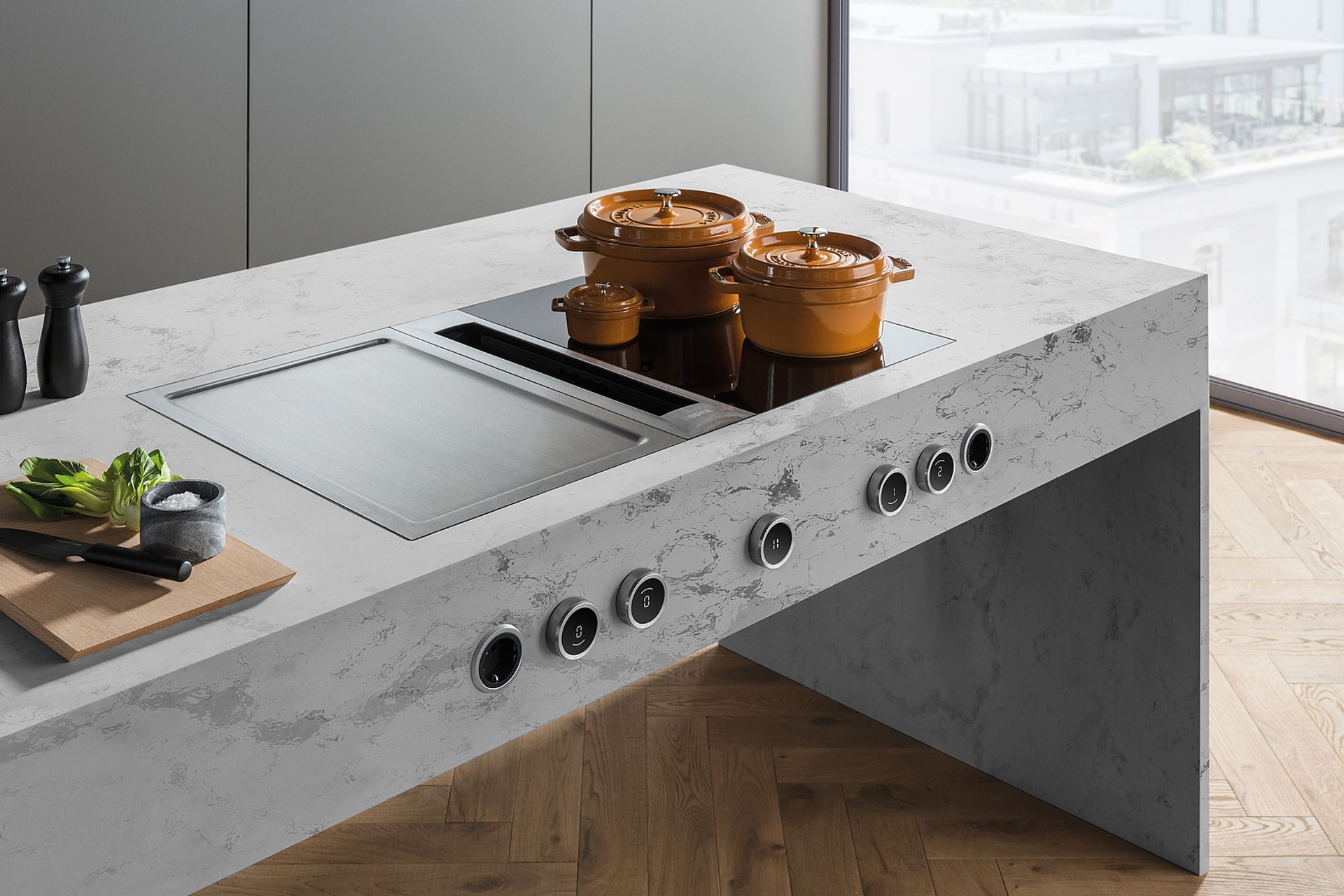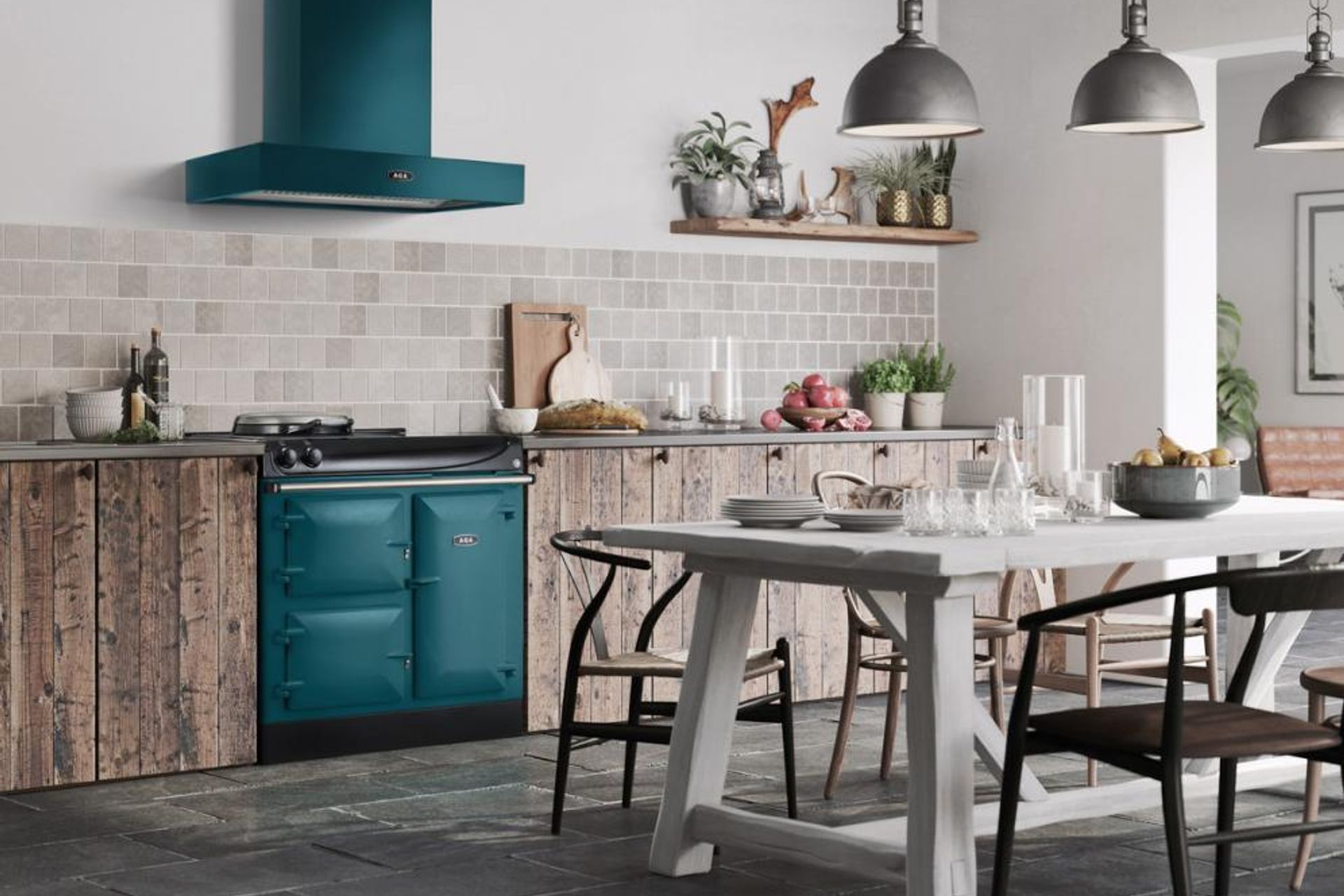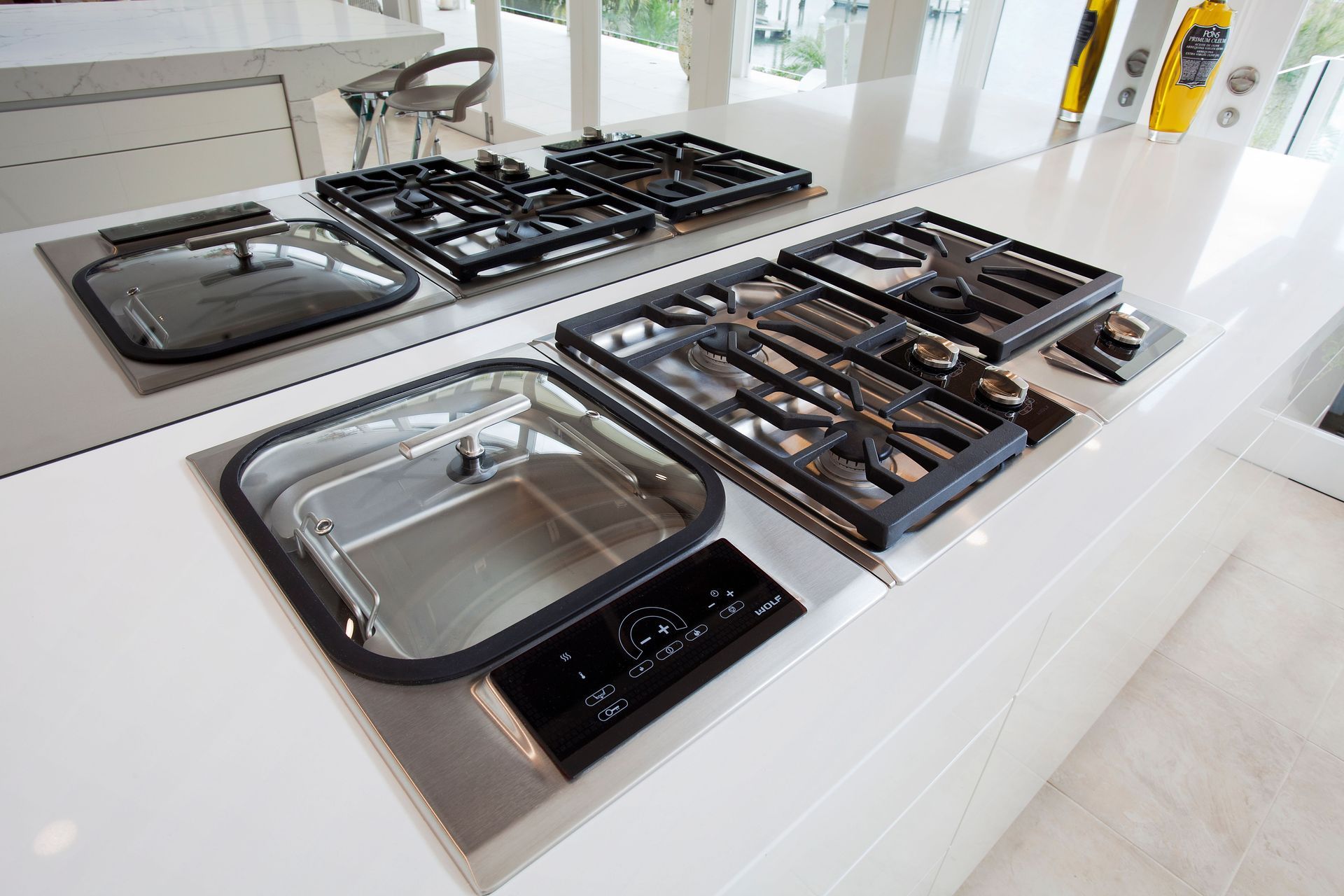Ceramic vs gas vs induction cooktops: which is best for you?

It’s no surprise that people invest significant time and money into renovating their homes, shaping them into their vision. One of the most important parts of the kitchen is, of course, the cooktop. Ceramic, gas, and induction are the three main types of cooktops that most people consider when upgrading their kitchens. However, how do they differ from one another, and more importantly, which one is the best for you?

How a ceramic cooktop works
A ceramic cooktop has a tempered ceramic surface under which coils of metal elements are placed. You can heat these elements to the temperature you need. The coil will then heat the ceramic glass surface and whatever you lay on top of it. One of the many benefits of ceramic cooktops is that they are easier to clean and can provide even cooking zones.
How a gas cooktop works
Chefs have long preferred gas cooktops because gas can generate heat instantly and lets you make instant adjustments to heat temperature levels. The gas flame provides you with a good visual guide of the level of heat you are using. This cooktop offers a modern and even industrial look to the space, which may be what you want. It is made up of a burner assembly attached to a gas valve that is connected to the main gas line. When you turn the knob, the gas enters a tube, and the burner ignites it. Gas cooktops can function with propane or natural gas.

How an induction cooktop works
An induction cooktop uses a magnetic field to produce heat and cook food. Unlike a gas or electric cooktop, which uses a burner, an induction cooktop uses a metal coil underneath to create that magnetic field when you turn the power on. An induction cooktop heats a pan with that magnetic field. As you lay it on the cooktop, the magnetic field will pass into the pan, generating heat. The heating element is now the pan, so the actual cooktop remains cool except for residual heat from the pan itself.
Related article: How to master culinary experiences with high-end gas and induction cooking appliances
Induction cooktop vs gas vs ceramic: comparing options
Before you can make a decision on the cooktop you want for your home, it’s wise to compare the options. Let us look at the pros and cons each can offer.
Pros and cons of ceramic cooktops
Ceramic cooktops are valued for their sleek appearance and ease of use. Consider these points:
Pros:
- Equipped with sensors to indicate which areas are too hot to touch.
- Responsive to temperature changes for precise cooking.
- Flat surfaces are easy to clean.
Cons:
- The surface heats up during use, requiring prompt cleaning to prevent spills from baking.
- Prone to scratching or damage from heavy cookware.

Pros and cons of gas cooktops
Gas cooktops are a popular choice for their versatility and reliability. Consider these pros and cons:
Pros:
- Provides instant heat and quick temperature adjustments.
- Suitable for woks and special trivets.
- Continues to work during power outages.
Cons:
- Requires a gas supply to operate.
- Harder to clean than induction cooktops.
Pros and cons of induction cooktops
Induction cooktops are known for their safety and efficiency. Here’s what to keep in mind:
Pros:
- Safer to use, especially in homes with children.
- Responds quickly to temperature changes and heats up rapidly.
- More energy-efficient than other cooktop options.
Cons:
- Generally more expensive than ceramic and gas.
- Requires compatible cookware made of magnetic materials.

Ceramic vs gas cooktops
These are both reasonably affordable options which means price isn’t a factor when making a decision. Gas cooktops are harder to clean than flat ceramic ones and there is a much higher risk of fire with them. However, gas gives you faster and more responsive temperature control when cooking, and you also get the visual aid of the flame. Many professionals only cook with gas, and if you consider yourself among the elite in this respect then your decision might be an easy one. Regardless, you should consider these factors when deciding between ceramic and gas cooktops:
- Both are reasonably affordable, so price is not a major factor.
- Ceramic cooktops are easier to clean due to their flat surface.
- Gas cooktops provide faster and more responsive temperature control.
- Gas cooktops carry a higher fire risk because of the open flame.
- Many professionals prefer gas cooktops for precise heat control and visual flame cues.
Gas vs induction cooktops
If you want the highest level of control as well as safety, you have to go for an induction cooktop and not a gas one. However, you’ll likely have to pay more upfront to do so. If you have a gas line in your home, the gas cooktop will likely be the most affordable option regarding running costs (depending on the rates of your local suppliers). Usually, if budget is one of your main concerns when choosing a cooktop, it is best to go for gas. However, it’s important to keep the following factors in mind when deciding between gas and induction cooktops:
- For the highest level of control and safety, choose an induction cooktop.
- Induction cooktops typically have higher upfront costs.
- If your home has a gas line, a gas cooktop is usually more affordable to operate.
- Gas cooktops are often the better choice for budget-conscious buyers.

Induction vs ceramic cooktops
Induction and ceramic offer great temperature control, but if you are worried about safety, induction is best. Ceramic is less expensive, however, and you do not have to worry about purchasing pots and pans made of specific types of metal like cast iron and stainless steel. This fact can put some people off induction altogether. When choosing between ceramic and induction, the toss-ups are between safety, cookware and cost.
- Both offer great temperature control, but induction is safer.
- Ceramic cooktops are less expensive than induction cooktops.
- Induction requires specific cookware, such as cast iron or stainless steel, while ceramic works with all types of pots and pans.
- The choice often comes down to safety, cookware compatibility, and cost.
Related article: Plan your dream kitchen: a guide to renovation costs
Upgrading your kitchen
With all the comparisons made between gas vs induction vs ceramic cooktops, you’ll hopefully have a better idea about the pros and cons of each. Taking into account your own household situation you should be well placed to choose the option that works best for you.
This article was updated on the 12th of December 2024
Browse premium cooktops from top Australian suppliers on ArchiPro
